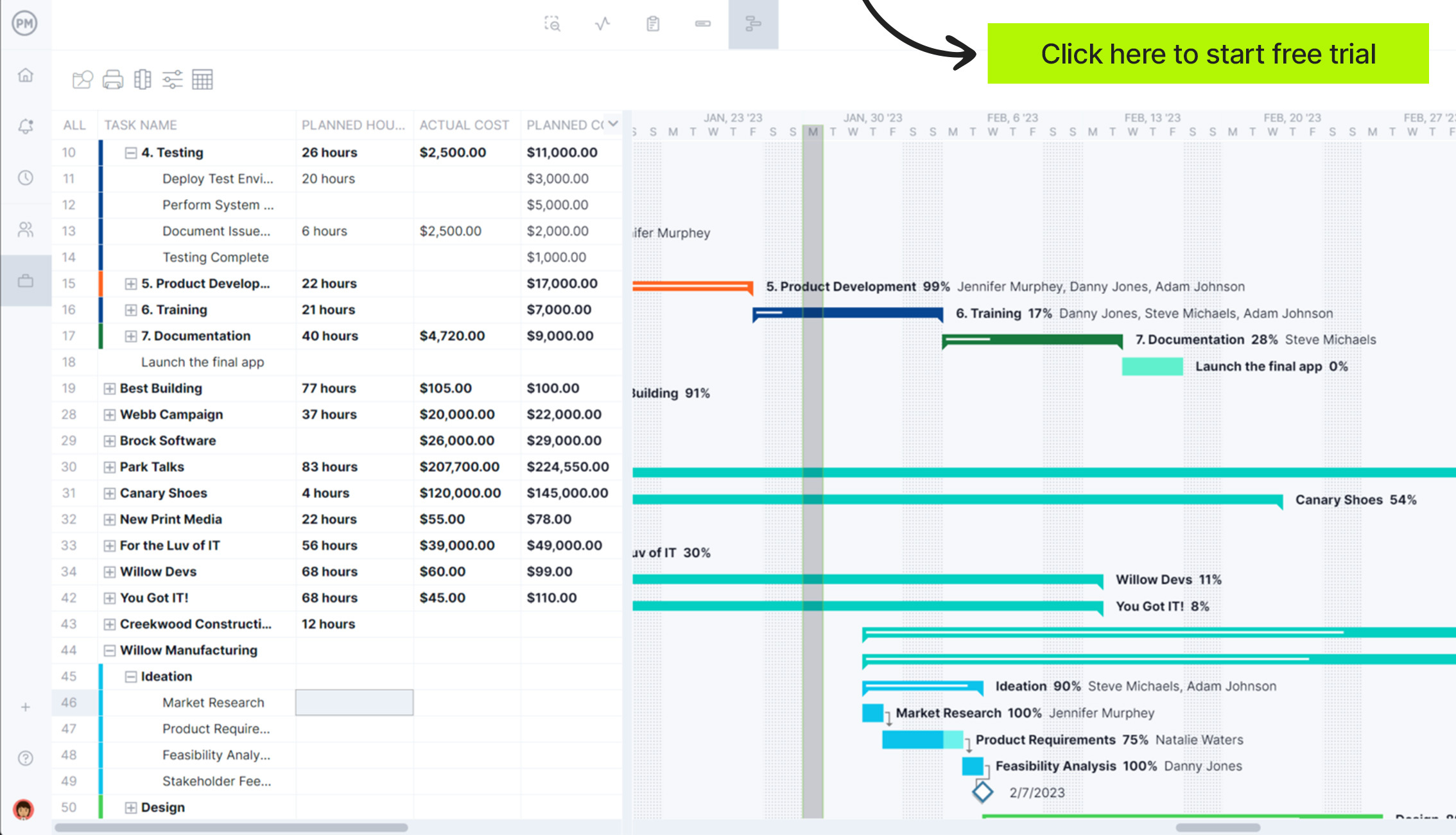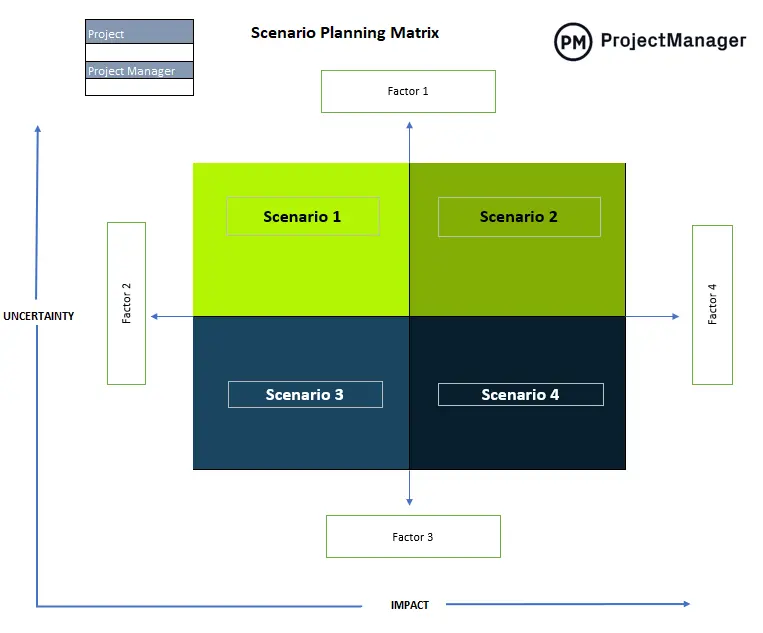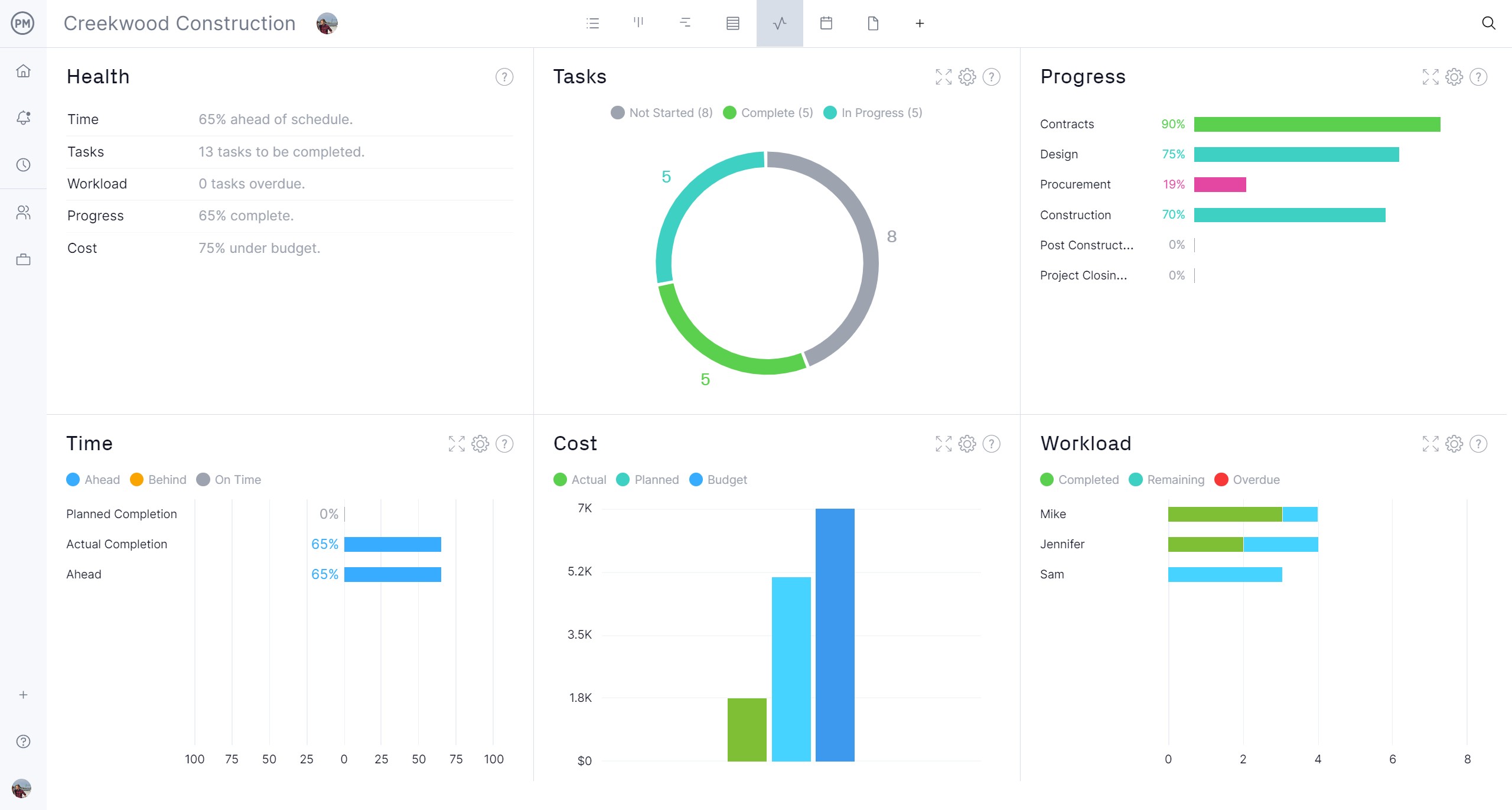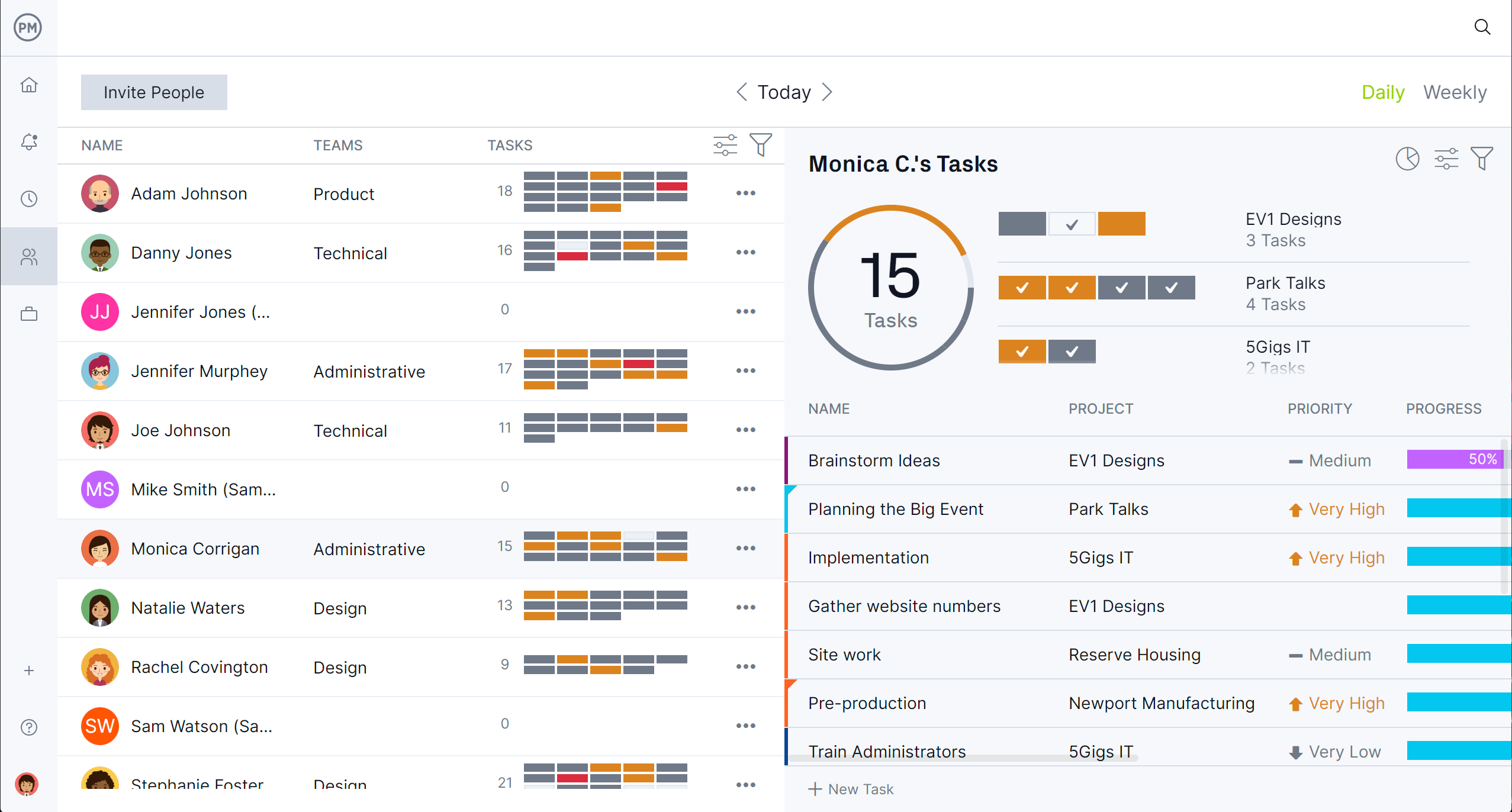Businesses are always straining to look around the corner and see what the future has in store for them. Being able to prepare for the changes in the market can set up a business to take advantage of these opportunities and grow larger and more profitable. This is called scenario planning.
To better position a business to be prepared to respond to the unknown, learn what scenario planning is and what the different types of scenario planning are. Then we’ll explore scenario planning in business and project management before explaining the steps that must be taken to use this process.
What Is Scenario Planning?
Scenario planning is a strategy used to consider possible future events for an organization or project to develop an effective and relevant long-term plan to respond positively to that change. It’s an assumption that the future will happen in such a way that a business can adapt to take advantage of the new dynamic.
That is easier said than done as there’s no definitive way to predict the future. However, scenario planning works by identifying a specific set of uncertainties, different potential outcomes, and using the set of assumptions to help guide the organization. It’s not perfect but is a useful tool to cope with unlikely or likely scenarios by being prepared for several different outcomes.
Scenario planning is different from forecasting. It considers trend analyses and qualitative data, but also examines quantitative data and past events. By using regular and consistent scenario planning, organizations can better allocate resources successfully, mitigate risk and decrease production costs. This also applies to projects, which can use scenario planning to help them respond to changes in time, costs and scope.
Project management software features can help map out scenario planning. ProjectManager is award-winning project and portfolio management software with roadmaps that can capture different scenarios and plan how to respond to each. The roadmap is a Gantt chart that shows multiple projects from start to finish all in one place. Managers can chart their scenario planning for a variety of different possible futures and be ready for whichever one comes to pass. Get started with ProjectManager today for free.

Types of Scenario Planning
Just as there are many possible futures, there are many types of scenario planning. All have advantages and disadvantages. For example, scenario planning is great for understanding the effects of plausible events, giving financial and other departments time to prepare their response, however, scenario planning is a lengthy process and factors can change quickly, so the process must be constantly updated.
Quantitative Scenario Planning
This looks at scenario planning through a financial lens. It examines the potential financial implications of best-case, worst-case and other hypothetical scenarios. This can be used for short-term forecasting, but the reliability of this type of scenario planning diminishes as complexity increases. Quantitative scenario planning also lacks transparency, which can create unreliable models due to flawed assumptions.
Operational Scenario Planning
This is the most common type of scenario planning. It focuses on the immediate impact of a specific event and provides short-term strategies to respond to it. Operational scenario planning reviews all potential outcomes of a certain decision and how they can influence the business or project.
Strategic Management Scenario Planning
This type of scenario planning looks at the big picture, from the economy in which the company is doing business to the likely behavior of the company’s customers. This is less about the company’s organizational planning than the environment in which it operates. It’s a difficult scenario to plan for as it’s painted in such broad strokes, but it allows scenario planners to brainstorm with greater freedom.

Get your free
Scenario Planning Template
Use this free Scenario Planning Template for Excel to manage your projects better.
Probability-Based Scenario Planning
This type of scenario planning looks at trends to determine the likelihood that an event will occur. It does this by defining the possible outcomes with a probability assigned to each that reflects the degree to which it’s likely to happen.
Normative Scenario Planning
This describes an achievable, most preferred end state, which is good for long-term corporate goals. Normative scenario planning is often combined with other types of scenario planning as it focuses on end goals and not on how to achieve them. Therefore, it articulates the what with little focus on the how or why.
Sensitivity Analysis
This is used to determine how different values of an independent variable affect a particular dependent variable under a given set of assumptions. That is to say, sensitivity analysis studies how various sources of uncertainty in a mathematical model contribute to the model’s overall uncertainty. This is commonly used by financial analysts and is known as a what-if analysis.
Scenario Planning in Business
Scenario planning is used in business to help companies navigate uncertainties. While CEOs would love to have the ability to predict the future, scenario planning is the next best thing. It provides businesses with the ability to explore the many possible futures and helps prepare their organization to respond quickly and effectively to whichever comes to pass.
Through in-depth analysis, businesses can define their decisions and actions for a variety of outcomes, which allows them to quickly make informed choices. This proactive problem-solving can prevent businesses from falling into pitfalls and navigate challenges effectively. It also fosters a diversity of thought as scenario planning thrives on diverse perspectives and challenges the status quo.
It can also act as an early warning system as businesses are aware of the first signs of a potential crisis by exploring many possible futures. This allows companies to act with timely intervention, which can prevent minor issues from escalating into major problems. Scenario planning can also be seen as contingency planning as it creates several plans to respond to an equal number of potential situations.
Scenario Planning in Project Management
Scenario planning is also helpful when managing a project. It’s used as a technique to evaluate possible outcomes, which allows project managers and their teams to create action plans to quickly adapt to changing circumstances. Some examples of what-if scenarios include: what happens if the project is delayed, approve a new project, how many resources are needed to stay on schedule, etc.?
This can be applied to project selection, resource allocation, timeline and budgets to work out which scenario plays out best for the project and organization. Scenario planning allows for project managers and their teams to quickly evaluate different solutions and react in a faster, more agile fashion. This helps reduce risks and improves the understanding of how changes and roadblocks will impact the project.
Therefore, using scenario planning in project management will provide risk mitigation, better decision making and adapting to change as well as resource optimization. It also allows teams to align their goals with possible future developments while remaining corresponding to the organization’s overall strategic objectives.
Scenario Planning Process
Scenario planning is a technique that can help businesses and project managers alike in being prepared for changes in the future. The faster they can respond to these changes, the more likely the business or project will succeed. To reap the benefits of scenario planning follow the steps below.
1. Define the Strategic Objectives of Your Organization
Before responding to a potential future, the strategic objective of the organization must be clear. Any action planned must align with the strategic objective of the organization or project. Therefore, be sure the organization’s strategic objective is clearly defined.
2. Identify Key Forces and Uncertainties for Scenario Building
Next, identify key forces and uncertainties, which means variables that can affect an organization’s ability to achieve its strategic goals. These can be internal or external, positive or negative, certain or uncertain factors and can include trends, drivers, forces, events, stakeholders, resources, capabilities, risks, opportunities and assumptions. Use tools such as brainstorming, SWOT analysis, stakeholder mapping and data analysis to help identify these key forces.
3. Use a Scenario Planning Matrix to Rank Forces and Uncertainties
Then comes the analysis part of the process. Look at the relationships and impacts of the factors that have been identified to help understand how they affect the strategic objectives of the organization or project. They should be prioritized in terms of their impacts and likelihood of occurring. A scenario planning matrix is a tool that can help do this by building and visualizing scenarios based on key uncertainties.
4. Build Scenarios, Make a Strategic Plan and Create What-If Strategies
Now, it’s time to create scenarios. That is, make a plausible and coherent story of how future scenarios might happen based on the key factors that have been identified and analyzed. These what-if scenarios will lead to the creation of what-if strategies to respond to them. Then these scenarios can be tested and challenge assumptions while exploring the different strategic options and actions. Then a strategic plan can be developed to address each of these scenarios.
Scenario Planning Example
To better understand scenario planning, let’s look at a simple example. Businesses and projects use scenario planning, but it might be more concrete to use a scenario planning example that’s more down to earth. For example, a farmer will use scenario planning to help them forecast their sales and how to invest in the future. They do this by predicting the weather. By creating scenarios for whether it will be a good or poor harvest the farmer can better plan planting and other activities to keep their business running.
Scenario Planning Template
To get started, download this free scenario planning matrix template for Excel. It’s a simple box that’s divided into four sections, each which can hold a different scenario.

There are also four factors to capture the important and uncertain key forces that can impact each of the different scenarios.
How ProjectManager Helps With Scenario Planning
Use the free scenarios planning template to figure out what might impact a project or business in the future. But once that has been determined and thoroughly analyzed, then project management software is going to help plan, manage and control the contingency plans that have been developed. ProjectManager is award-winning project and portfolio management software with features project managers and their teams want to figure out how much these what-if plans will cost and to monitor their progress and performance.
Estimate Costs and Resource Utilization
Having a scenario plan is only the first step. Next, project managers must be sure they have the funds to pay for it and the resources necessary to accomplish the project. Project costs can be set up when the project is created in the software and then tracked in real time. Resources can also be assigned to tasks in the Gantt chart and secure timesheets provide a window into labor costs. The team page or workload chart provides an overview of who’s assigned to what. If some team members are overallocated, the team’s workload can be balanced to keep them working at capacity and more productive.

Monitor the Impact and Probability of Risks & Uncertainties
To monitor the impact of scenario planning use real-time dashboards. The dashboard gives users a high-level overview of one or multiple projects. Live data is automatically collected and displayed in easy-to-read graphs and charts that show everything from costs to time, workload and more. Unlike lightweight alternatives, our dashboard doesn’t require a lengthy and complicated setup. It’s ready to provide an instant status report whenever one is needed.

When more detail is needed than the dashboard can provide, use customizable reports. They can be generated with just a keystroke and filtered to show only the necessary information. There are status and portfolio reports, as well as reports on variance, timesheets, workload and more. All of which can be shared in a variety of formats with stakeholders to keep them updated.
ProjectManager is online project and portfolio management software that connects teams whether they’re in the office, out in the field or anywhere else. They can share files, comment at the task level and stay updated with email and in-app notifications. Join teams at Avis, Nestle and Siemens who use our software to deliver success. Get started with ProjectManager today for free.


